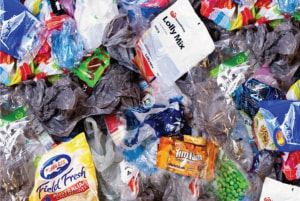The sixth edition of the Australian Food and Grocery Council's annual State of the Industry series shows some cause for optimism but also reinforces the ongoing challenge of staying competitive in a country with high costs and low margins.
The Australian food and beverage, grocery manufacturing and fresh produce industry had a total turnover of $114 billion in the 2012-13 financial year, or which food and beverage processing contributed $91.6 billion.
According to Terry O’Brien, chairman of the AFGC, and managing director of Simplot Australia, turnover is up slightly (0.9 per cent), according to the latest report, but job numbers are down (also by 0.9 per cent).
“In the food and grocery sector the juxtaposition of growth and declining employment reflects the reality of companies automating to reduce labour cost and drive higher efficiency and productivity, he says.
“The historically and persistently high Australian dollar is biting, but so too are high input costs, retail concentration and highly restrictive, complex and overlapping regulatory structures.
“In response, our sector is undergoing a painful adjustment – rationalisation of capacity, closure of smaller plants, and the drive for efficiency and scale.”
According to O'Brien, the report does, however, show solid export growth in processed food and beverages and a rising trade surplus in food, a welcome sign that the focus on market access and food export opportunities is paying off.
In 2013-14, total industry exports increased by 8.6 per cent and total imports grew by 6.1 per cent. This reduced the industry’s trade deficit to $1.8 billion, which continued to contract for a second year in a row.
Australia’s net surplus in food and beverages increased by 12.8 per cent to $8.6 billion in 2013-14.
Growth in exports grew especially strongly in key industries such as meat and dairy manufacturing, according to the report.
However O'Brien pointed to one area of concern: a flatlining of capital investment (a 0.3 per cent increase), at a time when the industry needs an infusion of capital.
“Food and grocery processing relies heavily on patient capital investment and when there is a reluctance to re-invest regularly to keep pace with technology and its associated productivity improvements, a vicious circle occurs where re-investment lags and returns inch lower over time, and so, capital is even less likely to be attracted,” he says.
“We need a step change in investment, which requires consideration of carefully focused investment allowances or incentives within the tax system for a period that will provide an ongoing boost to activity, exports and jobs.






